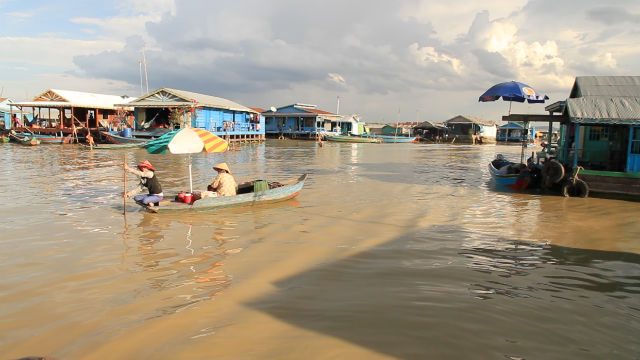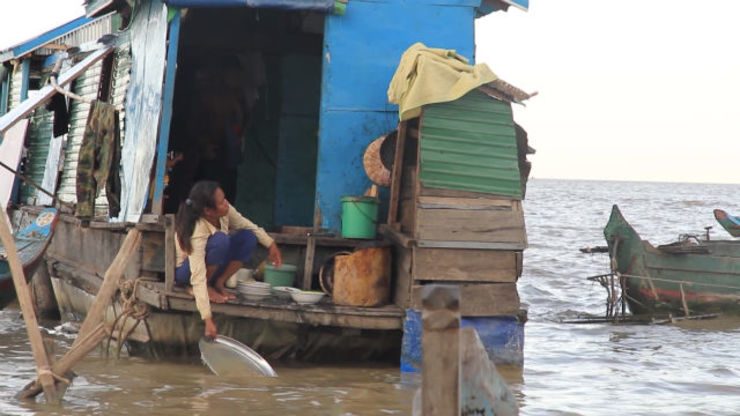SUMMARY
This is AI generated summarization, which may have errors. For context, always refer to the full article.

PURSAT, Cambodia – When I first arrived at the floating village in Pursat on the Tonlé Sap lake, some 150km from Phnom Penh, I saw a confident little kid who was rowing a tiny wooden boat to his floating house near a mini-shop. I was amazed at how this little kid felt so comfortable with what he was doing.
Life in the village echoes the calm waves of the water it rests on. I was surprised to see homes, schools, salons and even dental clinics – an entire community – built to float in order to adapt the constantly changing water levels.
Access to water and sanitation a problem
Tonlé Sap, the largest freshwater lake in Southeast Asia, is home to over one million people in Cambodia, including many ethnic Vietnamese, and numerous Cham (Muslim) communities living in floating villages around the lake. There are about a thousand families in the Kompon Loung area.
Ironically, residents of these floating villages lack the basic human right to clean water and sanitation.
In June 2014, I joined a team that visited these communites for a school project called “No Comment Cambodia III” to document different social aspects in Cambodia.
The villagers told us that their floating houses do have toilets, but the waste collected goes straight through a hole and into the lake.
For some families, because their homes are too small to build a space for a toilet, they use their neighbors’ toilets in the daytime and row the boat far from the village at night time.
Aside from defecating directly into the lake, people in floating villages also don’t have a system for proper waster management. They throw their daily waste into the lake. This increases the pollution in an already polluted water system and creates numerous risks for families there.

Pollution problems
Despite the pollution, most villagers still use the water from the lake to clean their dishes, and wash their clothes. Some even use it for drinking and cooking.
Poor families, who can not afford to buy clean water, filter the lake water using alum to make it “clean.” If they want to drink the water, they boil it before drinking.
We talked to Commune Chief of Kompong Loung and Executive Director of Rural Friend For Community Development (RFCD), an organization working with rural community in Pursat, regarding the problem of the Kompong Loung community. They said they wanted to build a proper latrine for the villagers but they could not find one suitable for the community. The official added that even if they can build one, they would have another problem with waste management once the storage fills up.
The lack of clean water and access to decent sanitation is very dangerous, especially for children. The most common disease in the area is diarrhea, which kills over 50,000 children every year according to WaterAid.
This problem is not unique to the Kompong Loung village as other rural areas in Cambodia share the same plight.
There are over 11.5 million people living in rural Cambodia as of 2006. According to UNICEF, of this number, some 69% still practice open defecation in 2011. This is the highest open defecation rate in East Asia and the Pacific.
In addition, about one-third of Cambodians do not have access to clean water and over 10,000 Cambodian children have died because of diarrhea, according to WaterAid.
The immediate solution is to provide these rural households with basic sanitation facilities and educate them on good hygiene practices.
The longer term solution, however, will require a concerted action by the government and civil society to decrease the risks to women and children in these otherwise idyllic floating villages. – Rappler.com
Tep Chansophea is a Rappler intern. She studies Media Management at the Department of Media and Communication of Royal University of Phnom Penh, Cambodia.
Add a comment
How does this make you feel?
There are no comments yet. Add your comment to start the conversation.